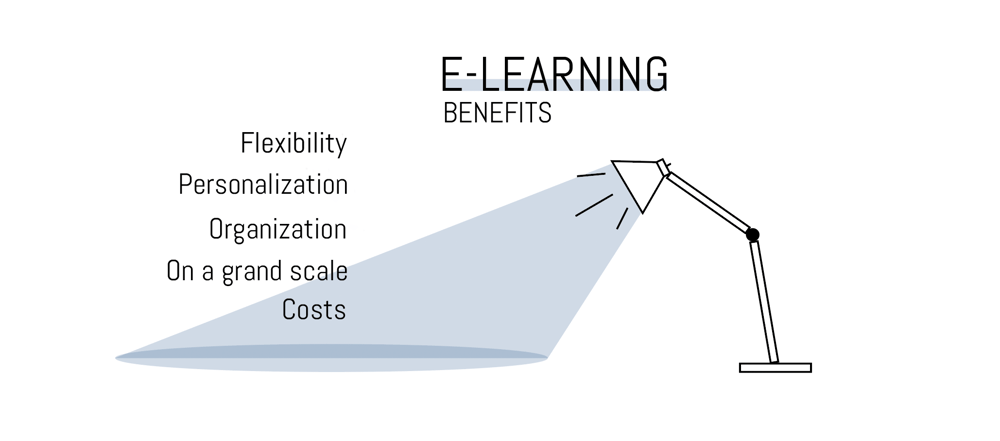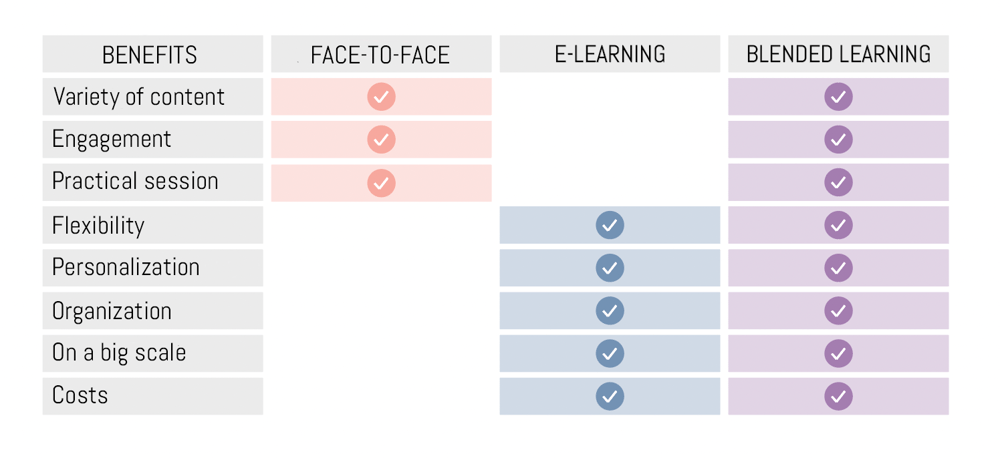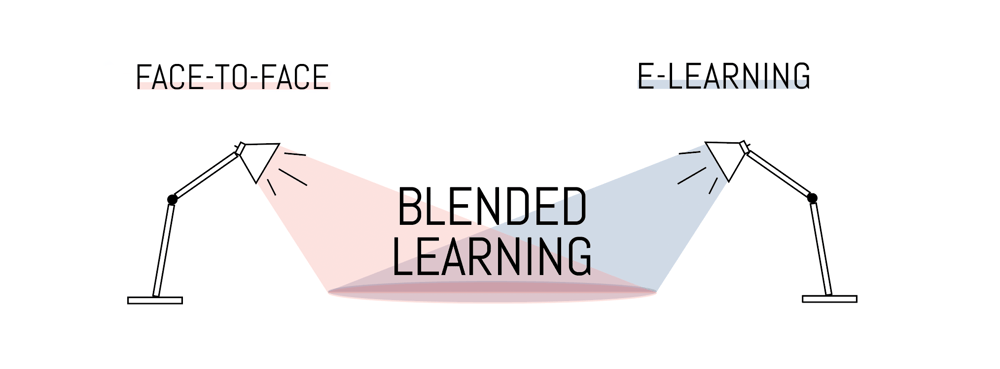6 Minutes of reading
What is blended learning: Everything you need to know
Blended learning focuses on the learner's experience by combining face-to-face training and e-learning.
Imagine this scenario: On a Wednesday afternoon, the head of sales of your company comes to see you and is beaming from ear to ear. Why? He has just finished the integration project of his CRM tool. The tool has excellent functions, brand new, but the sales team is not trained to use it. So what's next?
How can you include the whole team in training? Some of them might be working from the headquarters, but most of them only pass through from time to time.
You could arrange face-to-face training, but it will be challenging to gather all the sales people in the same place at the same time. So E-learning could also turn out to be a crucial problem-solver.
Work with the head of sales to create a presentation and video tutorial to explain how CRM works and then make it available to your sales people on an e-learning platform.
Great idea! Unfortunately tough to put into practice because of time management issues. Another possibility is to organise a face-to-face training session with the few salespeople present and film it.
That's the benefit of blended learning - a flexible and realistic approach to corporate training that combines the simplicity of face-to-face training with the advantages of e-learning.

What do we mean by blended learning?
Blended learning is a blended learning methodology that focuses on learning impact and pedagogical objectives without imposing a particular learning style. Instead, it takes the good aspects of face-to-face training and e-learning (also known as distance learning) to create individualized training paths.
This flexibility corresponds to a reality that all the training managers we work with share. Everyone wants to maximize the impact of the training courses and the learners' commitment while reducing the time spent in face-to-face training to reduce additional costs.
In short, blended learning is:
- A training methodology that does not impose a particular way of learning
- A method that takes the benefits of face-to-face and e-learning
- A flexible methodology that adapts to the reality of training today
- A methodology that evolves with the times by adopting new technologies
The benefits of face-to-face training
Face-to-face training is the classic training mode: a trainer gives training to one or more participants. It is the most common form of professional training.
And one can understand why the advantages are numerous:
- The richness of content - The trainer can share his or her experience to a much greater extent through face-to-face contact.
- Engagement - By interacting with the learners, the trainer can personalize the training and engage the learners.
- Manual subject - Some subjects are more complex than others, such as the various trade training courses with manual activities. It is challenging to digitize them.
The advantages of e-learning
E-learning training uses the technological advances of recent decades to train learners on virtual media (PPT / Video / Audio / other tools). The use of e-learning is increasing, and developments continue.
As for face-to-face training, the advantages are numerous, but they are fairly different:
- Flexibility - Probably one of the most significant advantages of e-learning is the possibility to conduct the training from the learner's preferred workplace and at the learner's convenience. It also means from any medium, be it a desktop, tablet, or smartphone. We can also imagine the use of videoconferencing.
- Customization - Thanks to the digitalization of training materials, learning paths can be customized with different modules to adapt to the needs of each learner by offering other formats (Type / Duration / Difficulty / etc.). This personalization of the training paths allows an increase in the learners' commitment.
- Organisation - Digital learning greatly facilitates the organisation of training courses by companies and is a real-time-saver. It is also easier for the learner to have his organization.
- On a large scale - Training hundreds or even thousands of people in e-learning is not much more complicated than training a few people.
- Costs - The reduction of training costs is another advantage of e-learning compared to face-to-face training. In particular on the cost of the trainer and the logistical costs related to the travel of the learners.

The concept of blended learning: benefits
Blended Learning takes advantage of both face-to-face and e-learning to create training courses: practical and pragmatic - easier to organise and manage - with more engagement and impact on learners - less expensive.

Find out more about the pros and cons of Blended Learning.
How do we move on to blended learning?
Typically, the choice of blended learning should be evident to you by now. But how do you go about it?
We recommend that you do it gradually. Most of our clients already organise face-to-face training. We, therefore, recommend that you start digitising existing training courses using the various advantages discussed above.
The blended learning format that we recommend as a starting point:
- [E-learning] Introduction to the subject of training
- [E-learning] Validation of pre-requisites thanks to a quiz
- [Face-to-face + E-learning] Face-to-face training of the trainer with support available on an online platform.
- [Face-to-face + E-learning] Validate the knowledge acquired throughout the face-to-face training thanks to quizzes and then a final examination to validate the training.
- [E-learning] Provision of training materials and additional resources for those who wish to delve deeper into the subject.




